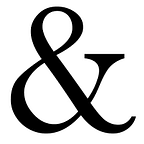Should Ranked Choice Voting have a Place in our Democracy?
Background: When New Yorkers vote in the city’s primaries in June, it will be the city’s first use of ranked-choice voting, which lets voters list up to five candidates in order of preference instead of picking just one candidate.
A candidate must get more than 50% support to win. If no candidate reaches that mark, the person with the fewest votes would be eliminated.
The ousted candidate’s votes get redistributed to the voters’ second choices. That will continue until only two candidates remain.
Proponents say that the ranked-choice method gives voters a greater say in who gets elected and that it encourages candidates to appeal to a broad set of voters. But critics say that the system can be confusing. This blog will articulate the most common benefits and critiques of the system.
How it can improve electoral systems: Ranked-choice voting increases the probability that a winner has the approval of a majority of voters by considering their preferences, apart from their first choice. This way, the problem of winning on a mere plurality is mitigated, and public servants are chosen because they more genuinely reflect the electorate’s desires.
Furthermore, Ranked-choice streamlines the election process, making it less expensive, more efficient, and fairer. Critics of the current system say elections will work better if voters rank their choices on the ballot rather than being forced to go to the polls twice and ultimately vote for a party primary winner that they don’t align with ideologically. Rather than holding primaries, political parties would list all eligible candidates on a single final ballot, and a consensus choice will emerge. Instant-runoff voting would eliminate the need for state-funded runoffs in close elections, saving money and time for both the state and the electorate.
Entrepreneur Andrew Yang, who campaigned for the 2020 presidential race and is currently running for the mayoral position in New York, argues that ranked-choice voting leads to more moderate representatives who better reflect voter preferences rather than rewarding ideological extremists. The system also prevents a “spoiler effect” in which a third (or fourth or fifth) candidate splits the vote of the most popular candidates by making elections less of an either-or proposition. Yang argues that it leads to less negative campaigning writing “since each voter can potentially vote for a candidate as well as their opponent, candidates shy from negative campaigning that would alienate the supporters of other candidates, instead trying to appeal to those voters as their second or third choice.”
Potential drawbacks: One of the most prevalent criticisms of RCV is ballot exhaustion.
A study published in 2015 that reviewed 600,000 votes cast using ranked-choice voting in four local elections in Washington State and California found that “the winner in all four elections receive[d] less than a majority of the total votes cast.”
This occurred because not all voters are going to rank all five presidential candidates on their ballot. Many voters may only list their top two or three candidates, particularly when candidates are on the ballot for whom they would never even consider voting. Thus, if a voter only ranks two of the five candidates and those two are eliminated in the first and second rounds of tabulation, their choices will not be considered in the remaining rounds of vote calculation. This ballot exhaustion leads to candidates being elected who were not the first choice of a majority of voters but only a majority of all valid votes in the final round of tallying. Thus, the winning candidate may fall short of an actual majority, eliminating the influence [of many voters] over the outcome.
My Take: Polarization is a dangerous issue plaguing this country, and RCV has the potential to quell it. While mechanically RCV is not yet perfect, allowing voters to consider politics as a continuum with a range of preferences rather than a dichotomy could create a more cohesive, efficient, and representative system.
